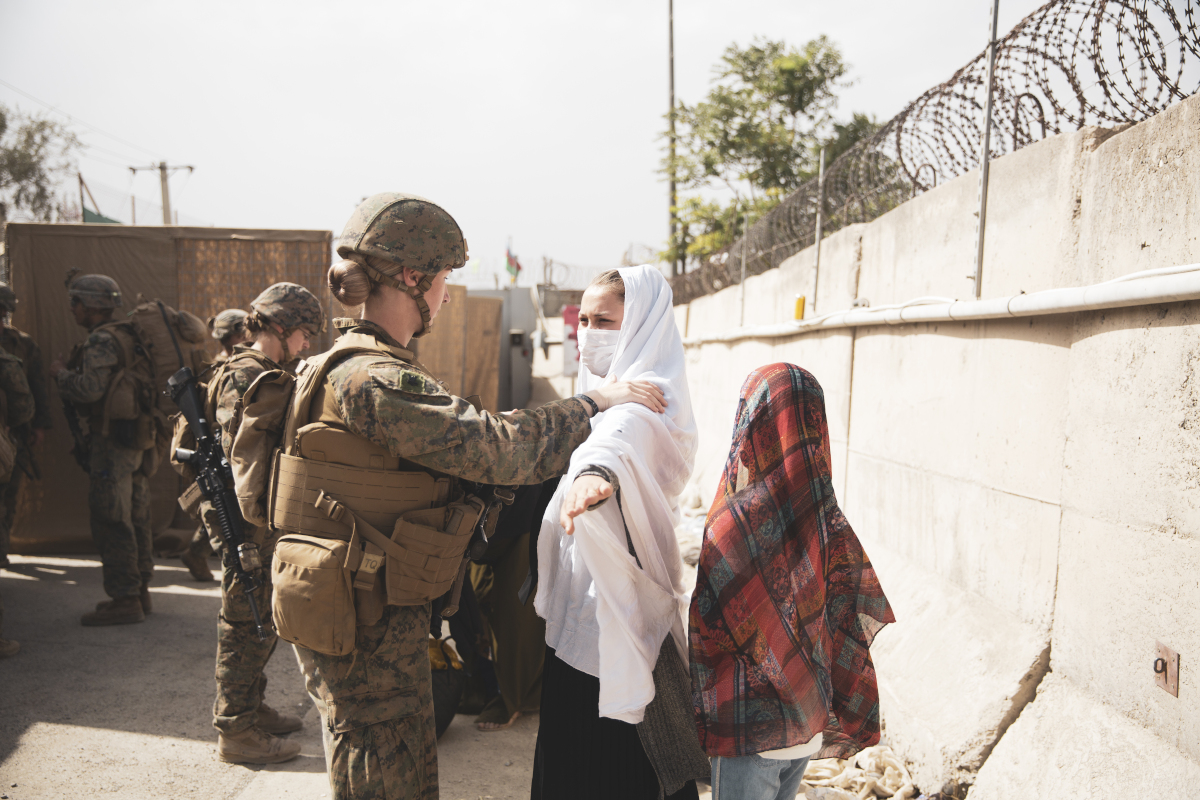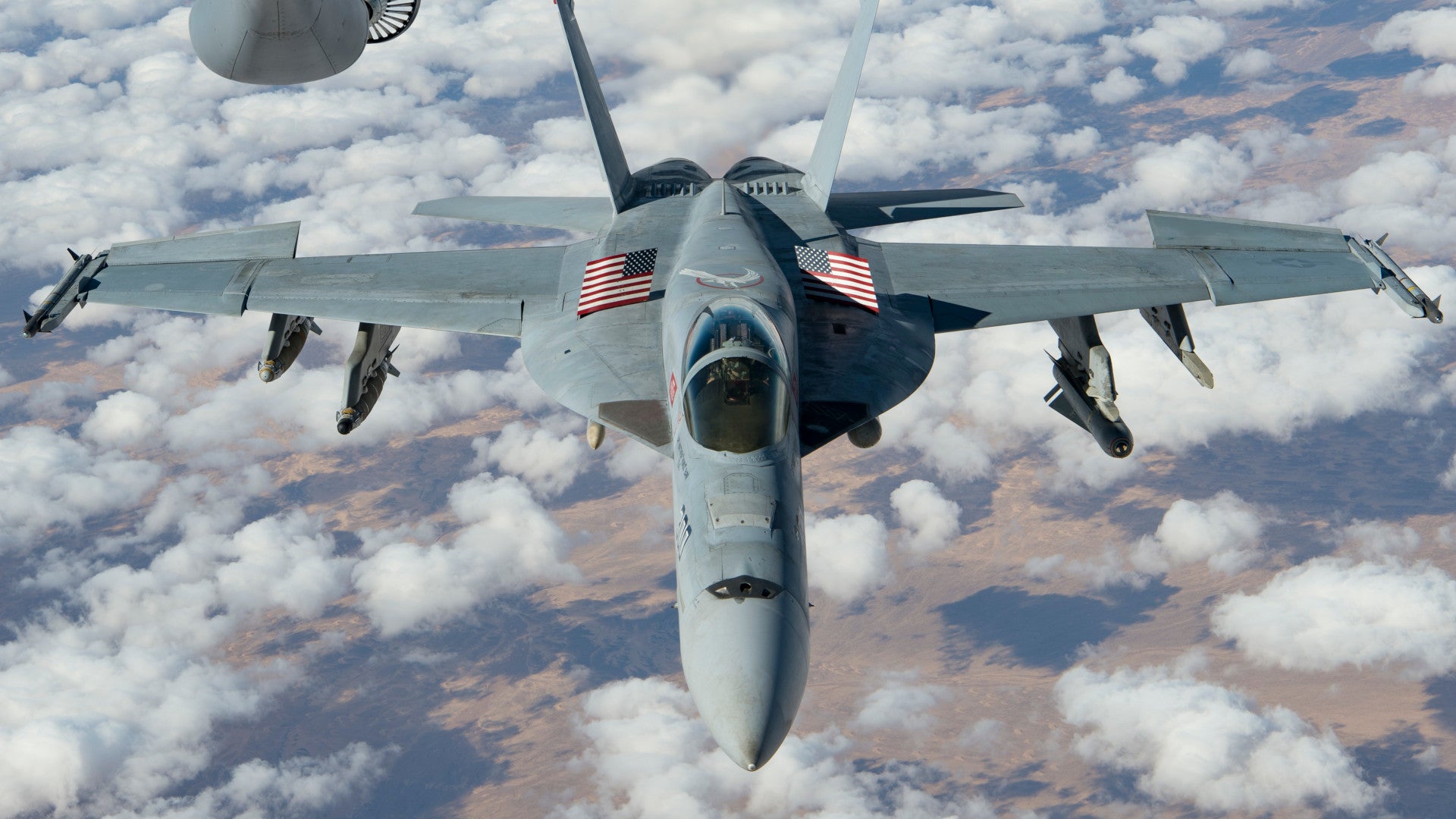The U.S. Navy F/A-18E/F Super Hornets flying from the deck of the Nimitz class aircraft carrier USS Ronald Reagan, which is presently sailing in the North Arabian Sea, have been flying armed overwatch sorties over Kabul in the past 24 hours, according to the Pentagon. However, U.S. military officials have denied earlier reports that these aircraft made any low passes over the city and have declined to elaborate on exactly what might prompt American warplanes to conduct airstrikes in support of the ongoing evacuation operations in Afghanistan’s capital.
Pentagon Press Secretary John Kirby and U.S. Army Major General Hank Taylor, the Director of Current Operations within the Office of the Joint Staff, provided the new details about armed aircraft operating in the skies over Kabul at a briefing at the Pentagon today. Kirby stressed that these recent Super Hornet sorties were not the first missions by armed American aircraft over Afghanistan since the drawdown of American troops in the country morphed into a massive evacuation mission after the Taliban took Kabul on Aug. 15, 2021. The Super Hornets operating over Afghanistan, like other American combat aircraft, would have to fly to the country via Pakistan with the help of U.S. Air Force aerial refueling tankers.

“These are not low pass flights…they are at altitude,” Kirby said. “There had been some reporting out there that there were low passes and that there was some sort of shows of force, and I think we felt it was important for the General [Taylor] to provide some context about what is happening in the air and why.”
Journalists and others in Kabul had taken to social media earlier in the week to comment about what they described as low passes by fighter jets. Subsequent reports had suggested that these individuals could be hearing low-flying fighters carrying out shows of force in support of the evacuation operations at Hamid Karzai International Airport.
This would not necessarily have been surprising given that the situation at the airport was extremely chaotic earlier in the week and remains tense, with continued reports of violence just outside the perimeter that U.S. forces and other foreign military personnel have now established. Shows of force involving low and fast-flying combat jets are typically employed to discourage hostile or potentially hostile individuals from pursuing attacks on American personnel or facilities overseas without having to actually resort to lethal airstrikes.
“The ability to provide close air support is something that needs to be immediate if the condition on the ground ever required that,” General Taylor explained. “We ensure there are always assets available so that the commander.”
Yesterday, the Chairman of the Joint Chiefs of Staff, U.S. Army General Mark Milley, had said that a wide array of aircraft, manned and unmanned, were either flying similar missions over Afghanistan or were otherwise positioned in the Middle East to respond to contingencies there, if necessary. In addition to Super Hornets, he had said that these assets included U.S. Air Force AC-130 gunships, B-52H bombers, F-16C/D Viper fighter jets, and MQ-9 Reaper drones, and U.S. Marine Corps AV-8B Harrier jump jets.

“Obviously force protection is a high priority,” Kirby added at today’s press conference. “This is just an added layer of force protection.”
It is worth pointing out that the new information from the Pentagon today does not mean that people on the ground in Kabul were entirely wrong about hearing low-flying jet-powered aircraft. The C-17A Globemaster III cargo plane, which is powered by four jet engines, is the primary platform that the U.S. military is presently using to help Americans and others evacuate Kabul.
In addition, as The War Zone reported in detail last month, the C-17A crews train to conduct low-altitude tactical takeoffs, as seen in the video below, specifically to help avoid potential hostile fire from the ground. Doing this when taking off from the airport in Kabul would make good sense given persistent reports of gunfire outside of Hamid Karzai International Airport and indications in the past that at least some of this might have been Taliban members taking potshots at departing aircraft.

Just in the past 24 hours, 13 C-17As arrived Kabul carrying troops and equipment, according to General Taylor. A dozen of those planes left Hamid Karzai International Airpot in the same period, with more than 2,000 passengers on board, he added. Since evacuation operations began over the weekend, the U.S. military has facilitated the departure of approximately 7,000 people, in total, through Hamid Karzai International Airport. This includes American citizens, Afghans eligible for Special Immigrant Visas (SIV) due to the risks they now face due to their past work with the U.S. government, and what Taylor described as “other evacuees in coordination with the State Department.”

Evacuations through Hamid Karzai International Aiport are still proceeding steadily, at least according to the Pentagon, and the plan remains for the entire operation to conclude by Aug. 31. “We have not experienced and security incidents nor interference since my last update,” Taylor said, referring to his last briefing on the situation in Afghanistan yesterday.
At the same time, reports continue to emerge that even U.S. citizens and others with valid American passports are struggling to make their way through Taliban checkpoints to get to the airport at all. SIV applicants and others, especially average Afghans who are desperately trying to flee the country as the Taliban formalize their new regime, are faring even worse.
Yesterday, Secretary of Defense Lloyd Austin said that there was no plan, at present, for U.S. forces to go outside of the airport to try to help people get to the airport, and Press Secretary Kirby and General Taylor reiterated today that this remains the case. This comes amid reports that British and French forces are doing exactly the opposite, and have been actively heading out into Kabul to find and gather up evacuees. This reportedly causing tensions of various sorts between U.S. personnel on the ground and allied forces.
All of these issues only raise further questions about how long it might take for the U.S. military to complete all of the expected evacuation flights. There also remains no guarantee that the Taliban will continue to allow foreign military activity of any kind to continue at the airport in the coming days, let alone weeks from now. The basic logistics of the operations at the airport, where there are now approximately 5,200 American troops, among other forces, has also been a point of concern.
“There is plenty of fuel sustainment capability at Hamid Karzai [International] Airport,” Press Secretary Kirby said in response to a question about whether the U.S. government might be having to buy fuel from the Taliban. “We also have the ability on our own, our logistics ability, to fuel our aircraft as needed.”
U.S. forces in Kabul will also need to be extracted at the end of the mission and may be forced to abandon substantial amounts of materiel, especially if there is a need to rapidly leave Hamid Karzai Airport due to sudden changes in the overall security situation. The War Zone has already been able to confirm that the U.S. State Department has now abandoned seven CH-46E Sea Knight helicopters in Afghanistan’s capital, which supported the initial evacuations from the U.S. Embassy to the airport, as you can read more about here.
While the Pentagon is stressed that armed aircraft are still only performing overwatch missions over Kabul, they also made clear that they could quickly shift their focus to close air support, if needed. They could also be called in to destroy aircraft, vehicles, and other equipment left behind at Hamid Karzai International Airport whenever the last elements of the evacuation force ultimately depart.
“We’ve made it very clear to the Taliban that any attack upon our people and our operations at the airport will be met with a forceful response,” Press Secretary Kirby said.
Whatever happens, the Pentagon has made clear that armed American combat aircraft have been, are, and will continue to be overhead above Kabul, poised to act if need be.
Contact the author: joe@thedrive.com
